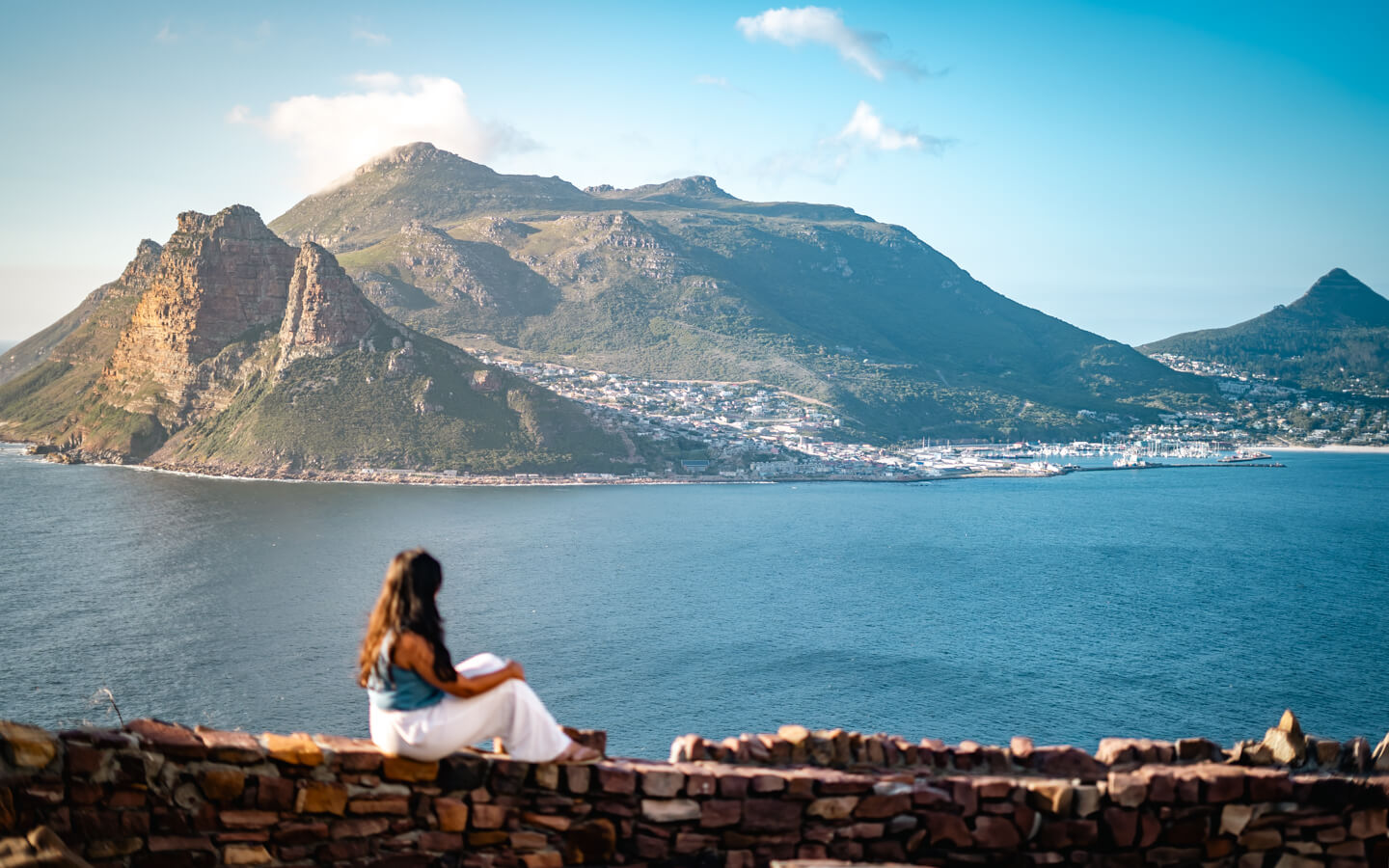South Africa offers the perfect mix of adventure, wildlife, and jaw-dropping landscapes—making for an unforgettable holiday. Funny enough, we never had South Africa high on our travel list, but looking back, I’m so glad we went.
And if you’re already planning to explore South Africa, adding Victoria Falls (on the border of Zambia and Zimbabwe) to your trip is a no-brainer. A short direct flight from Johannesburg takes you straight to one of the world’s most iconic natural wonders.
This 3-week South Africa and Victoria Falls itinerary covers it all—the famous spots and some offbeat gems. Plus, you’ll find everything you need to plan the perfect trip, from how to get around and where to stay to what to do each day, along with all our top tips.
Here are some things to keep in mind for this itinerary:
- Start your South Africa and Victoria Falls trip by arriving in South Africa. I’m advising you to arrive in South Africa instead of Victoria Falls because direct flights from your country to Vic Falls can be expensive, but they are much cheaper from South Africa. However, you should check this for yourself based on your home country!
- In the itinerary below, we explored the area around Johannesburg before Victoria Falls and not the other way round because of flight timings. But you can choose to do either bit first.
- For the entire time in South Africa, do rent a car. It’s the easiest way to see the country and quite cheap too. We used Discover Cars to do this and had a good experience, as always. The roads in South Africa are fabulous. However, they do drive on the left side of the road like the UK and all of the Commonwealth countries so it may take time to get used to if you generally drive on the other side.
- People always wonder about the safety in South Africa and we did too before we went. However, it turned out to not be as bad as we’d heard and read. Just try not to leave anything in the car when you park it on the side of the road, do not flash your valuables while walking on the road, do not entertain beggars, do not walk around in the dark and do not enter a settlement (don’t worry, it’s not easy to do so). All in all, we had a fabulous holiday so don’t let me scare you. Go without worry, but stay cautious and you’ll have the best time!
3 Weeks Itinerary for South Africa and Victoria Falls
Day 1: Johannesburg
Johannesburg OR Tambo Airport has the best connectivity in South Africa with the low fares. So it’s best to use it as a base to get to not only Kruger National Park, 440 km away, but also Victoria Falls.
But that’s as much of Johannesburg as I’m suggesting to see for this trip. If you have extra time and interest, you can take a guided tour of Johannesburg and Soweto (a historic township that played a key role in the anti-apartheid struggle and today is a cultural hotspot known for its music, street food, and rich heritage)
Where to stay: Stay near the airport itself so that you don’t waste any time on the city traffic in central Johannesburg.
Luxury: InterContinental Johannesburg
Mid-range: Protea Hotel by Marriott and City Lodge Hotel
Where we stayed: Wild Tree Lodge is 13 km from the airport but it is such a beautiful property with kind staff and great breakfast!
Things to Do on Day 1:
Land in Johannesburg and rent your car from the airport.
Check in at your hotel near the airport. You can use this day to buy groceries and snacks for your road trip, a SIM card (or simply get an eSIM here) and prepare for the road trip.
If you’re landing very late at night, then it’s best to get an eSIM and use Uber to get to your hotel. Rent a car the next morning.
Alternatively, you can take a flight to any one of the airports around Kruger—Kruger Mpumalanga International Airport or Skukuza Airport. From the airport, you can either have a shuttle transfer arranged with your hotel or rent a car to get around. It’s totally up to you!
Days 2-5: Kruger National Park
Kruger National Park is South Africa’s ultimate safari destination, packed with wildlife! Whether you’re spotting lions at sunrise or watching elephants by a watering hole, it’s an unforgettable adventure.
What sets Kruger apart from other safaris is that you can have a budget experience as well as a luxury one. You can also do a self-drive safari! Yes, you read that right. You can rent a car at the airport in Johannesburg or Kruger, pay the conservation fee for the park, and drive around spotting animals from the comfort of your car – no guides needed. Imagine seeing a leopard right from your car. It’s an absolutely exhilarating must-do experience.
That being said, it’s best to combine a self-drive safari with a guided safari to learn more about the animals. And you can easily do both here.
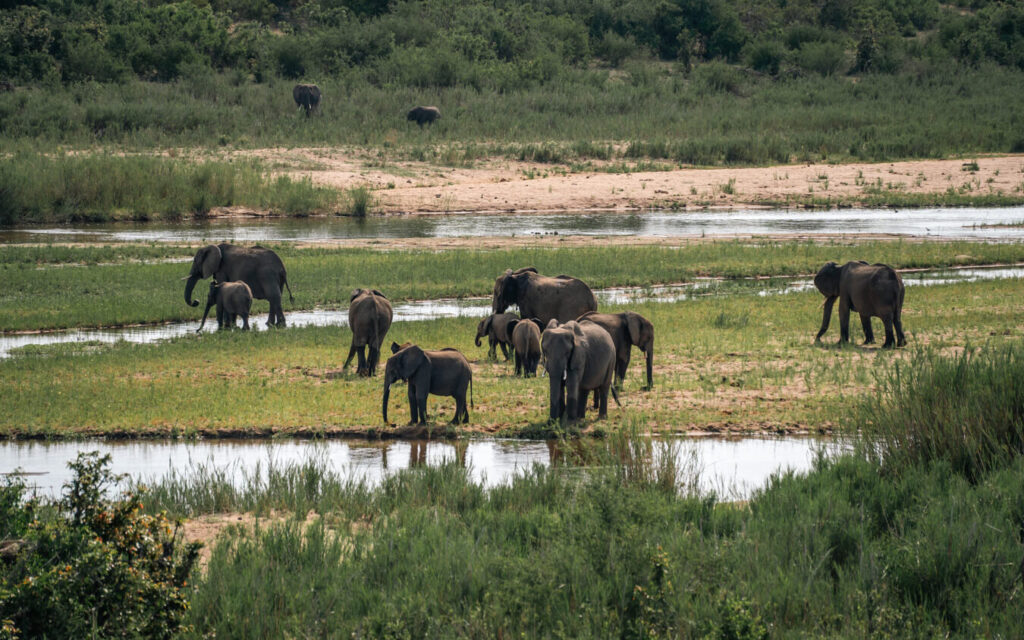
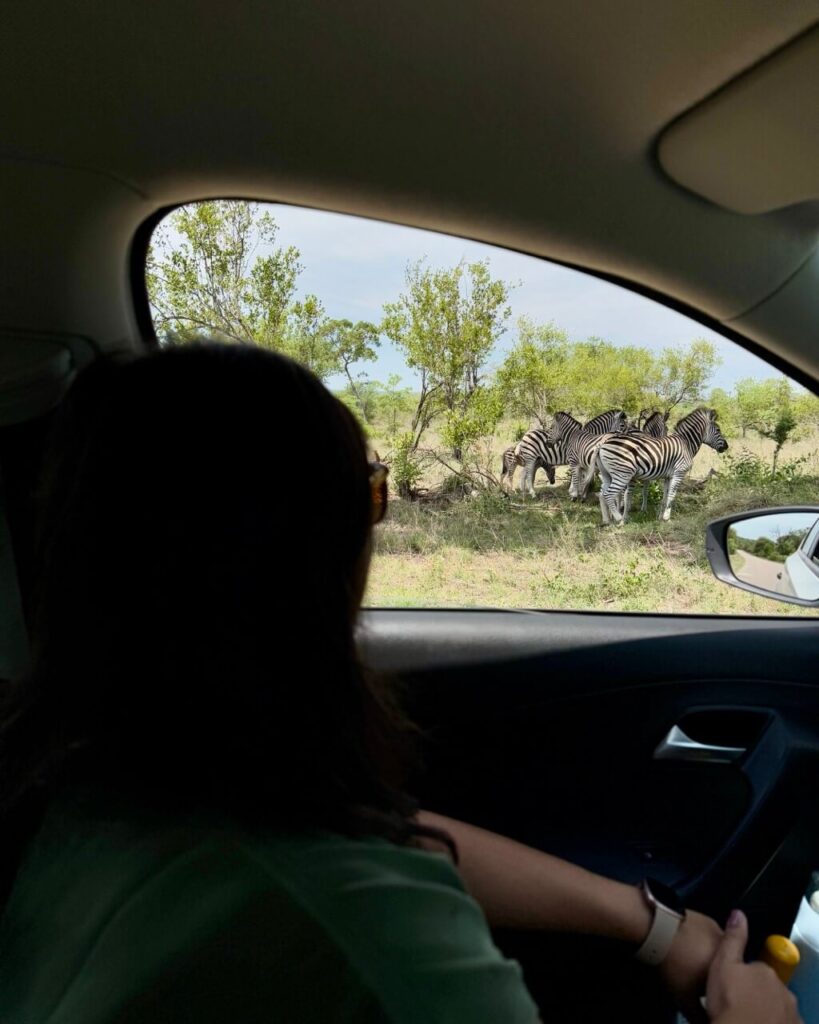
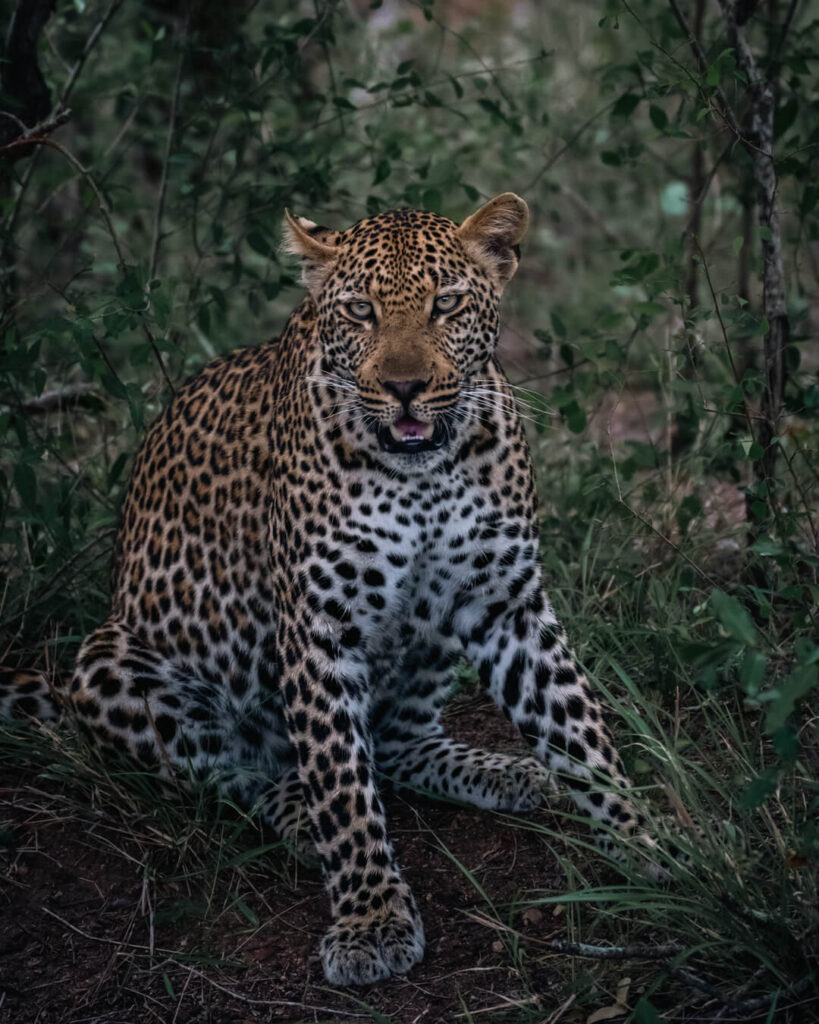
Where to stay:
Luxury: Stay in one of the all-inclusive lodges inside Kruger, like Hamiltons Tented Camp or Kruger Shalati.
Mid-range: Stay at one of the private lodges in Marloth Park, like Grace of Africa or near Crocodile Bridge Gate at Crocodile Bridge Safari Lodge
Budget: Stay at the SANParks camp or at Lower Sabie Rest Camp or Crocodile Bridge Gate.
For this 4-day, 3-night stay in Kruger, you can choose to stay in only one lodge, or divide your time between two lodges so you can take safari drives in different parts of Kruger. As mid-range travellers, we split our time between a cost-effective stay at Marloth Park near Crocodile Bridge Gate and a luxury stay near Paul Kruger Gate.
Related Reads:
–All you need to know before going on a self-drive in Kruger
–Kruger National Park itineraries
Itinerary for days 2-5 in Kruger National Park
Day 2: Start your 440 km drive (4.5 – 5 hours) to Kruger this morning in order to reach your lodge by check-in time. Drop your luggage and grab a bite. In the evening, go on a 21-seater sunset safari (pre-book it), which starts at 4:30 PM and ends at 7:30 PM, or do a safari arranged by your hotel. The advantage of the 21-seater safari by SANParks is that you get to have a sunset plus a night drive experience that no private safari can do!
Day 3: Go on a full-day self-drive safari starting at 6 AM. Start your drive at Crocodile Bridge Gate, where you’ll have to pay the conservation fee and submit your indemnity form. From there, drive to Lower Sabie for breakfast, spotting animals along the way. Then onwards to Skukuza Rest Camp, following the tar road and taking detours into the gravel roads as much as you like. In the evening, head back to your hotel or check into your 2nd hotel. Ensure you leave Kruger or are at your rest camp by 6 PM in order to avoid paying a fine.
Day 4: On this day, take advantage of your hotel-arranged safaris. Do both the morning and evening safaris. And use the afternoon to enjoy your hotel pool and facilities.
Day 5: Check out of your hotel early this morning and drive towards Blyde Canyon River Canyon (the largest green canyon in the world) via the Panorama Route. It’s a stunning drive with multiple view points and waterfalls to check out. You will not be able to see all of them so you’ll have to pick and choose. I’ll suggest doing the following in this order – Three Rondavels View Point, Bourke’s Luck Potholes (a bit of a trek), Lisbon Falls. Then grab lunch at Harrie’s Pancakes in Graskop. The savoury pancakes we tried were so yum!!
After exploring Kruger, make your way back to Johannesburg. The drive to Three Rondavels Viewpoint is about 138 km from Kruger, and from there, it’s another 395 km to Johannesburg Airport. Altogether, you’ll be on the road for around 6.5 hours. To reach Jo’burg by sunset, start your day early—ideally by 8 AM. If you’re leaving later, consider skipping some stops along the Panorama Route to stay on schedule.
Spend this night near the airport in Johannesburg!
Days 6-8: Victoria Falls
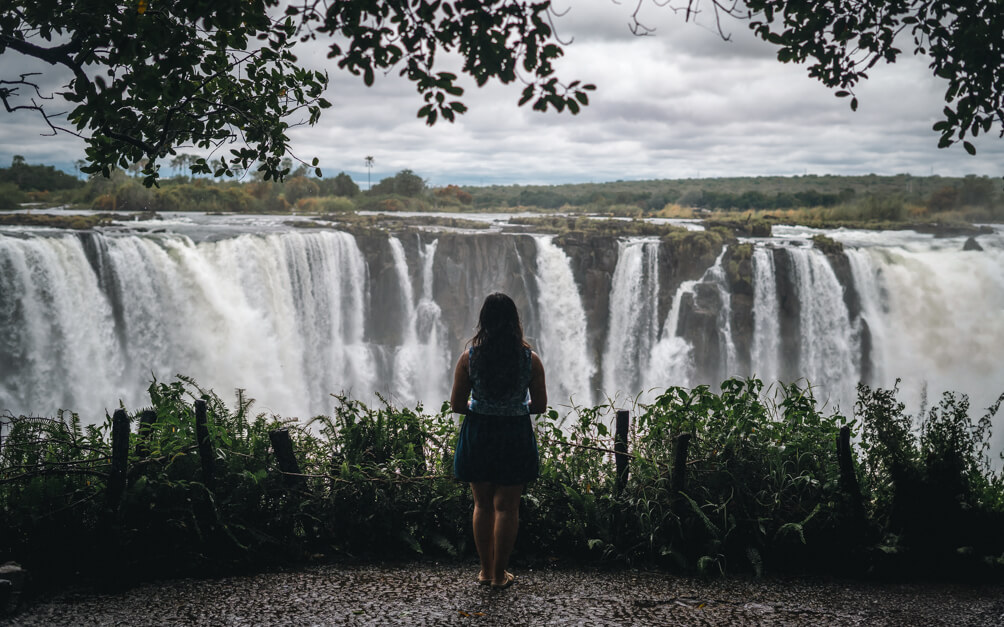
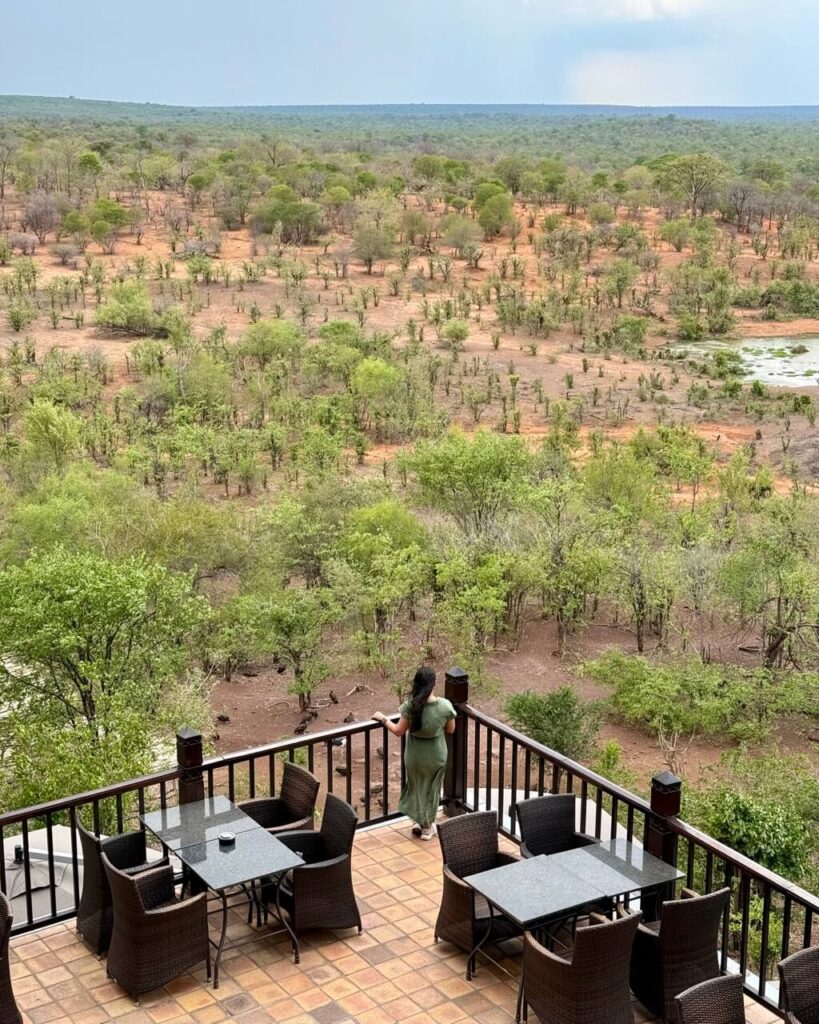
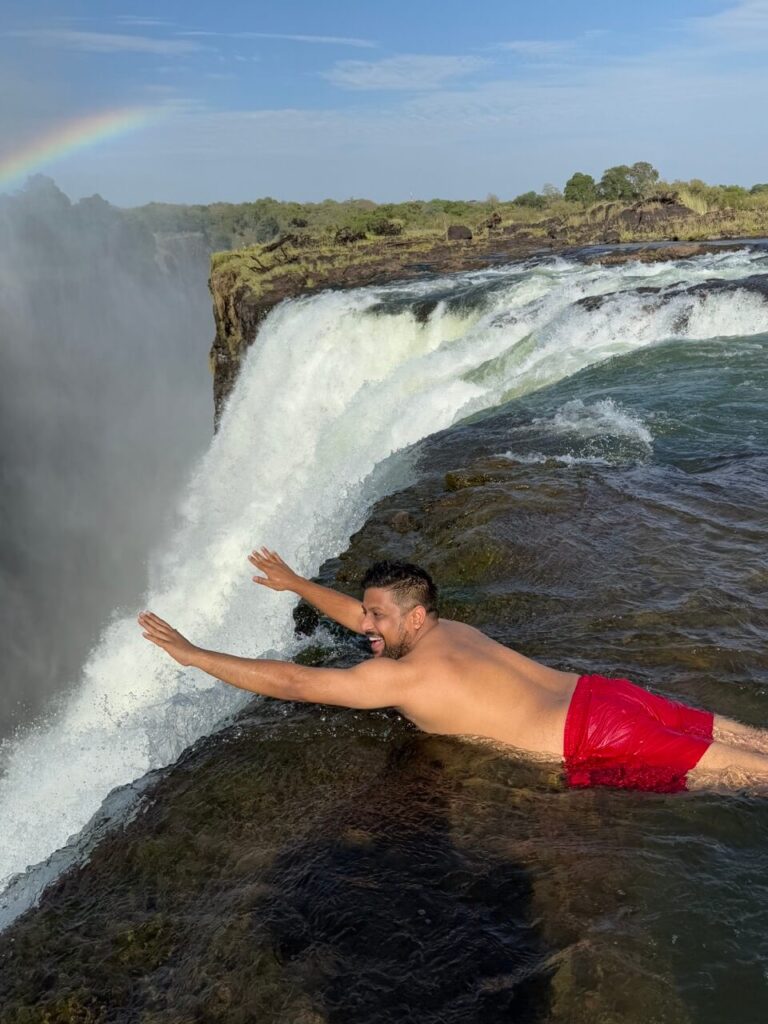
How to reach and get around: Take a flight from Johannesburg or Kruger (Nelspruit, Skukuza, or Mpumalanga International Airport) to Victoria Falls in Zimbabwe or Livingstone in Zambia.
To get to your hotel from the airport, arrange a transfer with your hotel.
To get around, you can either walk or take a local taxi. Ask your hotel to arrange the numbers of local taxi operators. In Zimbabwe, we called Mr Tobias of Wild Horse Taxis. He was the sweetest and always very punctual. His number is +263-779016580.
Where to stay: You can stay in either Victoria Falls in Zimbabwe or Livingstone in Zambia. This totally depends on your preference. Here are some great options:
Zambia: Royal Livingstone Hotel by Anantara (luxury), Ngoma Zanga Lodge (mid-range), Gloria’s Bed and Breakfast (budget)
Zimbabwe: Victoria Falls River Lodge (luxury), Shongwe Oasis (premium), Drift Inn (mid-range), Shoestrings Backpackers Lodge (budget)
Where we stayed: We stayed at an Airbnb called Self Catering Garden Guesthouse, which is a cottage within the premises of the host’s house. The space is huge and comfortable and the hosts are friendly and helpful. The only issue was that since it wasn’t exactly in the city centre, we had to take a cab each time to get anywhere.
How to Spend Days 6-8 in Victoria Falls:
This itinerary assumes that you’re staying in Zimbabwe. If you’re staying in Zambia, you can do similar activities. Just move them around to fit your schedule.
Day 6: Take a flight to Victoria Falls. After you reach and settle in, it’ll probably already be evening, so it’s best to go on the Sunset Dinner Cruise. This cruise is a leisurely ride over the Zambezi with unlimited alcohol and a 5-course menu. You get to see the spray of Victoria Falls, a beautiful sunset over the river and wildlife like hippos, crocodiles and such. It’s beautiful!
Day 7: Start your morning with a daring dip in the Devil’s Pool in Zambia (it’s scary but not as dangerous as it looks). Then explore Victoria Falls on the Zambia side before going vulture feeding at the Victoria Falls Safari Lodge, which is a free and super unique sight to see. In the evening take a helicopter ride over the falls. End the day with a theatrical show at Simunye.
Day 8: On your last day, explore Victoria Falls on the Zimbabwe side. Then walk to Lookout Cafe nearby, which offers great views over the gorge. You’ll find people ziplining and swinging on the gorge, which is something you can try as well. End the night attending the Boma Dinner and Drum Show.
For a detailed itinerary and guide, read our post on spending 3 days in Victoria Falls. It is a complete 3-day itinerary, not counting days for flights so it might be slightly different from what I’ve mentioned above.
Day 9: Cape Town
You’re not going to be exploring Cape Town just yet. Instead, you’re only going to stay the night near the airport before starting your road trip around the Garden Route. The reason why I’m asking you to stay back in Cape Town tonight is that, in all probability, it’s going to already be dark by the time you reach if you’re coming from Victoria Falls. Therefore, there is no need to drive in the dark to the next city and just stay put in Cape Town. However, if your flight timing is such that you’re reaching before dark, you can spend the night in Franschhoek instead.
Where to stay: Hotel Verde Cape Town Airport is an airport hotel perfect for a one-night stay. There are no other hotels within 7 km of the airport. However, if you’d like cheaper options, consider Strandloper Room or Old Oak Guesthouse.
What to do this day in Cape Town
Take a flight to Cape Town and rent a car for the next 13 days until you leave South Africa. There is no better way to explore all the next destinations, including Cape Town, as locations in Cape Town too can be far and rentals are quite cheap.
Day 10: Franschhoek
Drive Distance: 82 km
Drive Time: 1 hour
Franschhoek is a super charming town that totally steals your heart and you end up saying, ”I could live here”. Yes, it’s one of those. It’s surrounded by scenic mountains and lush world-class vineyards and cute houses owing to its French heritage. It’s known for its gourmet food (make reservations beforehand) and the famous wine tram, which is a must-experience. It’s the perfect spot for a laid-back yet indulgent escape before your road trip along the Garden Route.
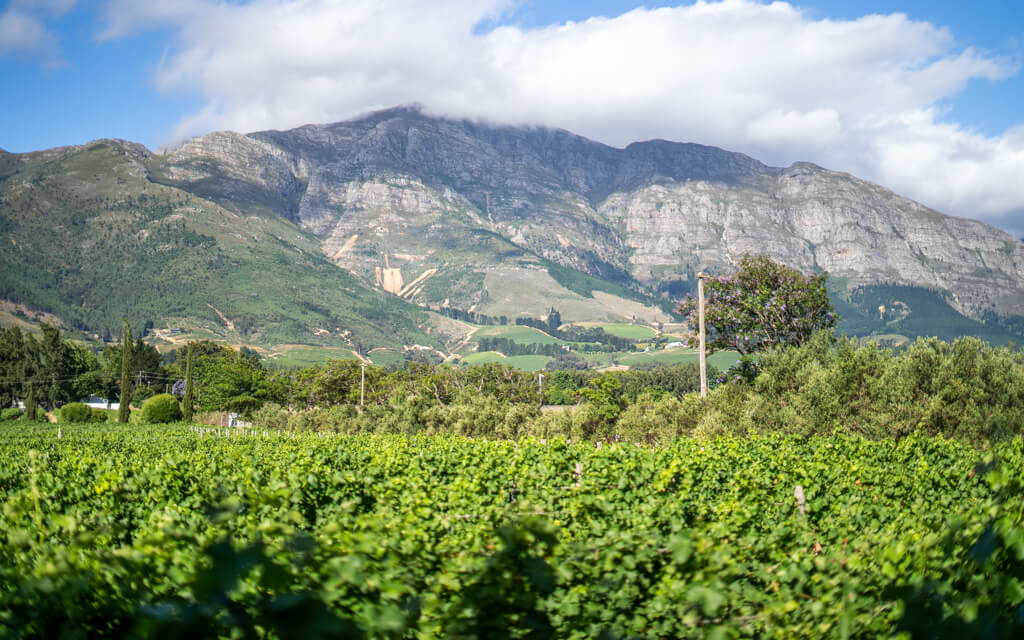
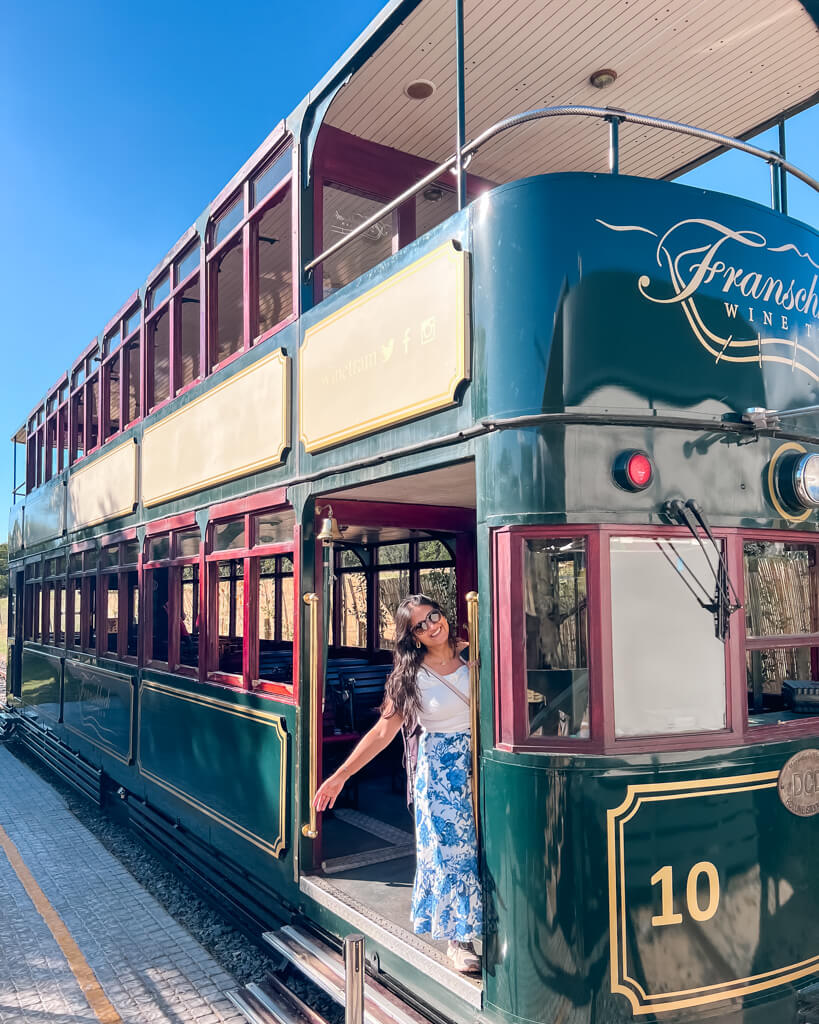
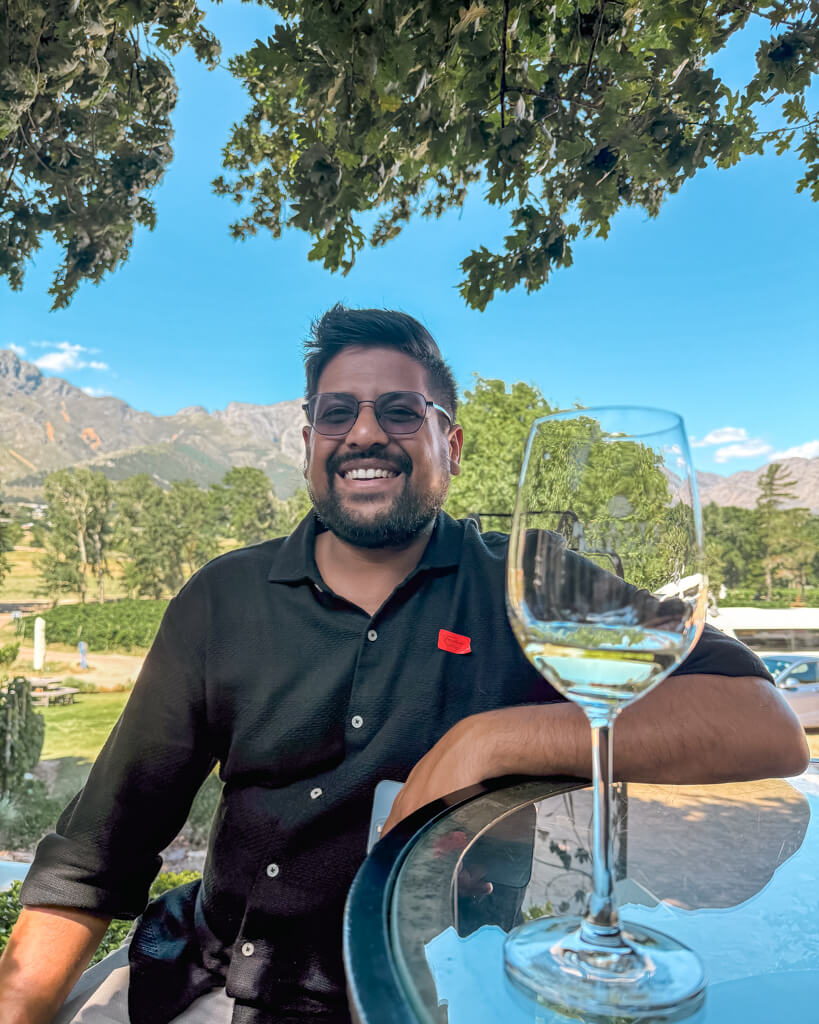
Where to stay:
Luxury: La Residence
Premium: La Cotte Orchard Cottages
Mid-Range: Petit Ermitage
Budget: Comfortable Room with Large en suite Bathroom
What to do on day 10 in Franschhoek:
Drive to Franschhoek: Drive there early in the morning. Ask your accommodation if you can check in early OR at least drop your luggage and park your car if need be.
Wine Tram: Your only agenda today? Visiting wineries, admiring the landscape, swirling, sipping, and eating. Sounds like the perfect day, right?!
If you’re a wine connoisseur, driving gives you the flexibility to visit wineries that truly interest you. But if you’re after a fun, carefree day, the Franschhoek Wine Tram is the way to go!
It’s a hop-on, hop-off system with five lines—Blue, Navy, Orange, Pink, and Red—each stopping at 6-8 wineries. Realistically, you’ll only manage 3-5 stops, which is plenty (trust us, you won’t need more!). Depending on your chosen line, you might also get to experience bus rides and even tractor rides between vineyards—just adding to the fun!
The Orange Line is the most popular, mainly for its two standout stops: Babylonstoren, a massive estate with endless activities and a stunning garden, and Vrede en Lust, which everyone raves about. However, the orange line leaves from Groot Drakenstein Terminal (15 minutes travel time from Franschhoek terminal)
We couldn’t get Orange Line tickets because we didn’t book in advance (you’ll need to reserve at least a week ahead). Instead, on our Airbnb host’s recommendation, we took the Red Line and really enjoyed it!
No matter which line you choose, it’s best to book the tickets in advance.
Dinner: For dinner, choose either of these restaurants – Allora (Italian), French Connection (bistro), Reuben’s Restaurant & Bar (creative menu), or La Petite Colombe (fine dining-tasting menu). Just ensure you make a reservation in advance at any restaurant in Franschhoek.
Day 11: Oudtshoorn
Drive Distance: 380 km
Drive Time: 4 hours 30 minutes
Oudtshoorn is known as the ostrich capital of the world and makes for the perfect rest stop between Franschhoek and the Garden Route. It’s a small town with ostrich farms, breathtaking semi-desert landscapes, and the largest cave system in Africa.

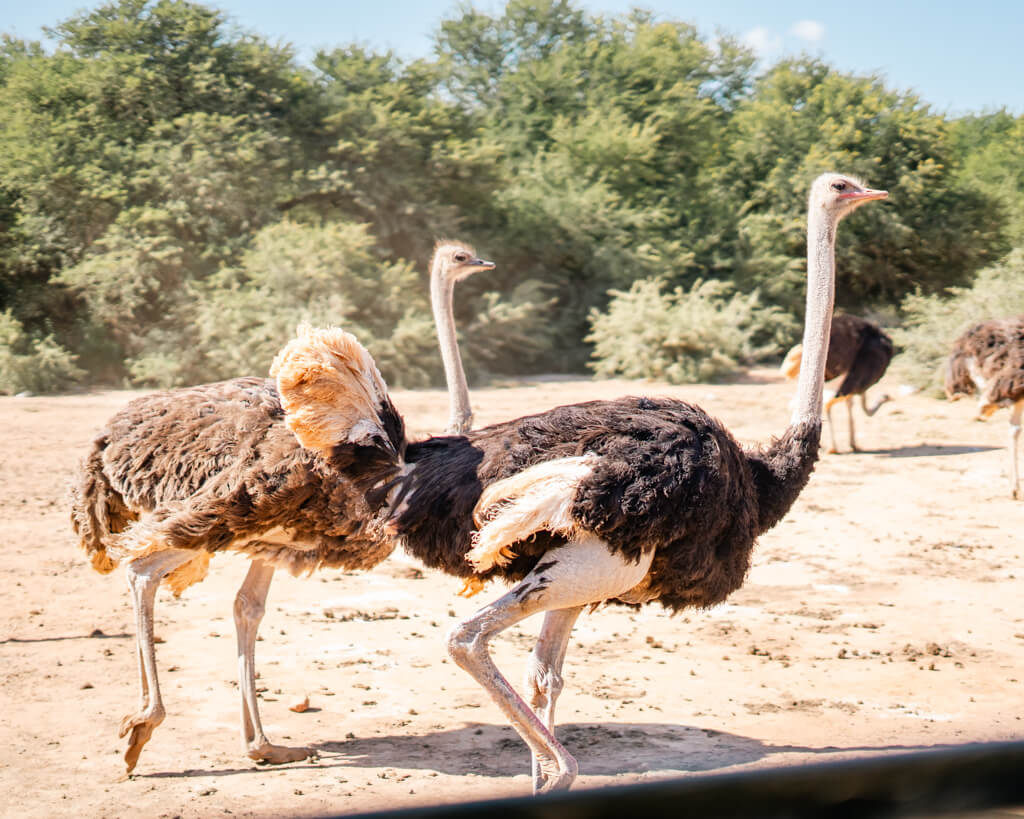
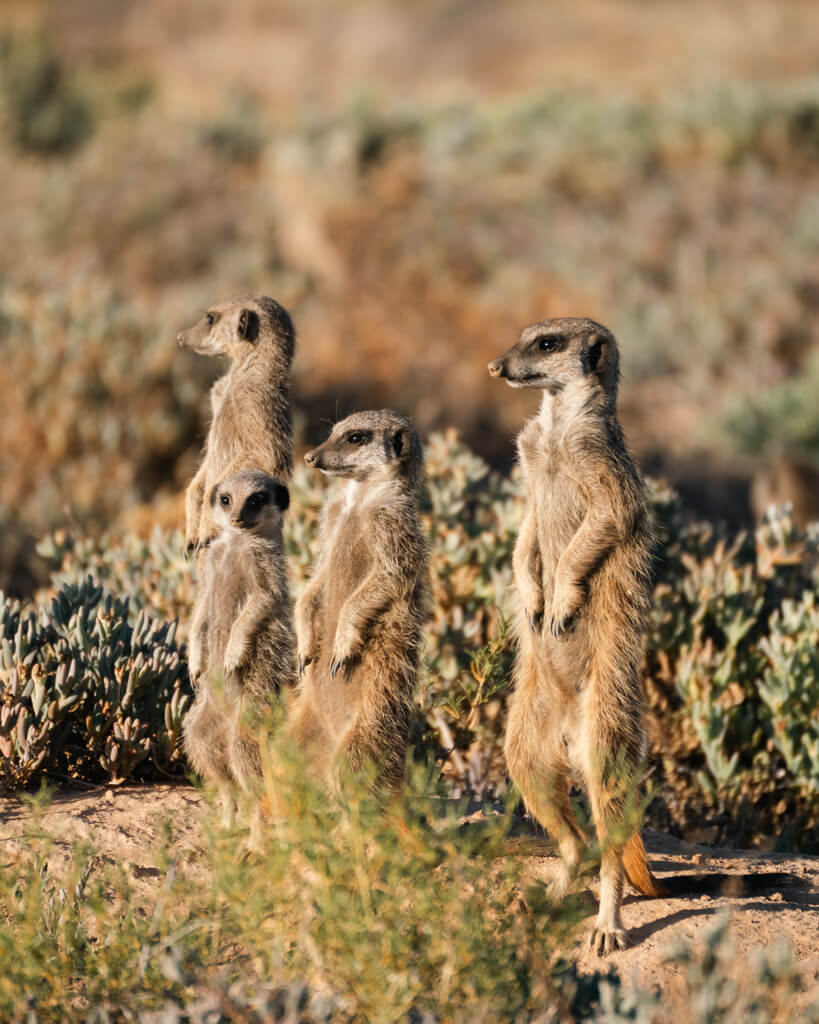
Where to stay:
Luxury: Rosenhof Boutique Hotel
Mid-range: La Pension Guest House – This is where we stayed and we highly recommend it! Nice room, friendly hosts, beautiful property with a lot of greenery and a pool, and delicious breakfast.
Budget: Gumtree Guest House
How to Spend Day 11 in Oudtshoorn:
Drive to Oudtshoorn: Drive from Franschhoek to Oudtshoorn via Route 62, and you’ll be met with some of the most incredible views—rolling vineyards giving way to rugged mountains, with clouds hugging the peaks like a scene straight out of a painting. Have coffee at The Barn on 62 along the way.
Safari Ostrich Farm: After checking in to your hotel, head to Safari Ostrich Farm for a fun and informative ostrich tour. You’ll learn all about these quirky birds, see them up close, and even get the chance to feed them.
Dinner: And that’s it for this day—wrap up the day with dinner at Nostalgie, a charming spot with a lovely garden setting and seriously delicious food.
Meerkat Tour Next Morning: But there’s still one more cool activity to tick off in Oudtshoorn before you move on! By now, you’ve probably seen Pumba in Kruger and maybe even Victoria Falls—but now it’s time to spot Timon in his natural habitat.
Meerkats are super elusive creatures, found only in the deserts and dry open plains of Botswana, Namibia, and South Africa. That’s it! So, you can’t miss this chance to watch them warming their bellies in the morning sun before breakfast—it’s honestly the cutest thing.
Make sure to book your tour in advance with Five Shy Meerkats, just outside Oudtshoorn. You’ll have to wake up before sunrise, but I swear—it’s totally worth it!
Day 12-13: Plettenberg Bay (Garden Route)
Drive Distance: 150 km
Drive Time: 2 hours 30 minutes
It’s finally time for the famed Garden Route. This is one of South Africa’s most epic road trips, winding through lush forests, rugged coastlines, and charming little towns. It’s packed with adventure—hiking, whale watching, and even bungee jumping off the world’s highest bridge (if you dare)!
For our itinerary, we chose to start with a stay at Plettenberg Bay (or just Plett) for two nights to see nearby sights. Plett is the perfect stop with its golden beaches, dramatic cliffs, and incredible marine life. Whether you’re kayaking with seals, spotting dolphins, or just soaking up the sun, Plett is pure magic.
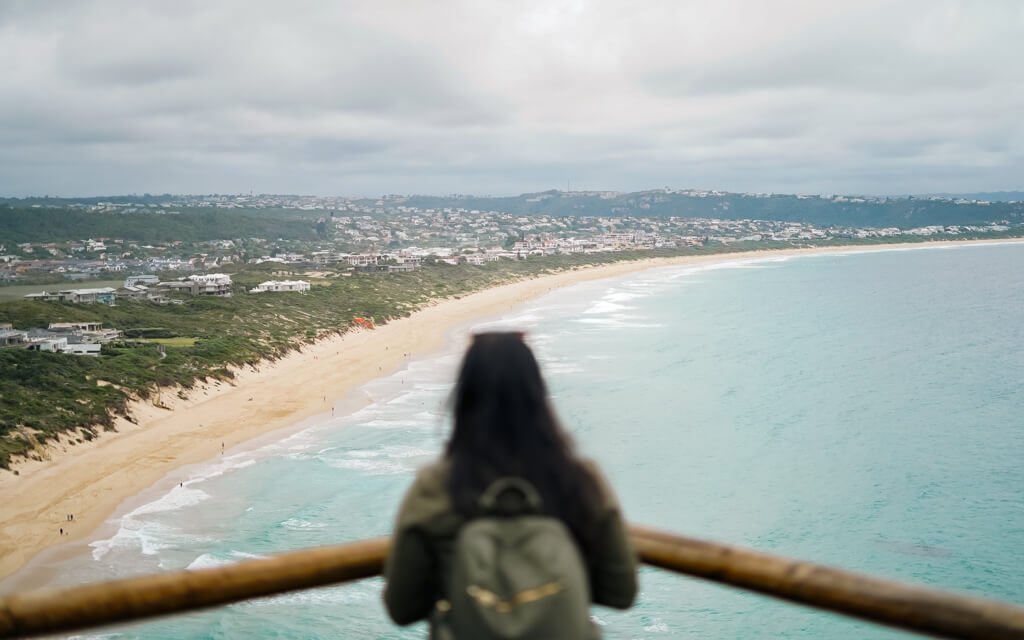
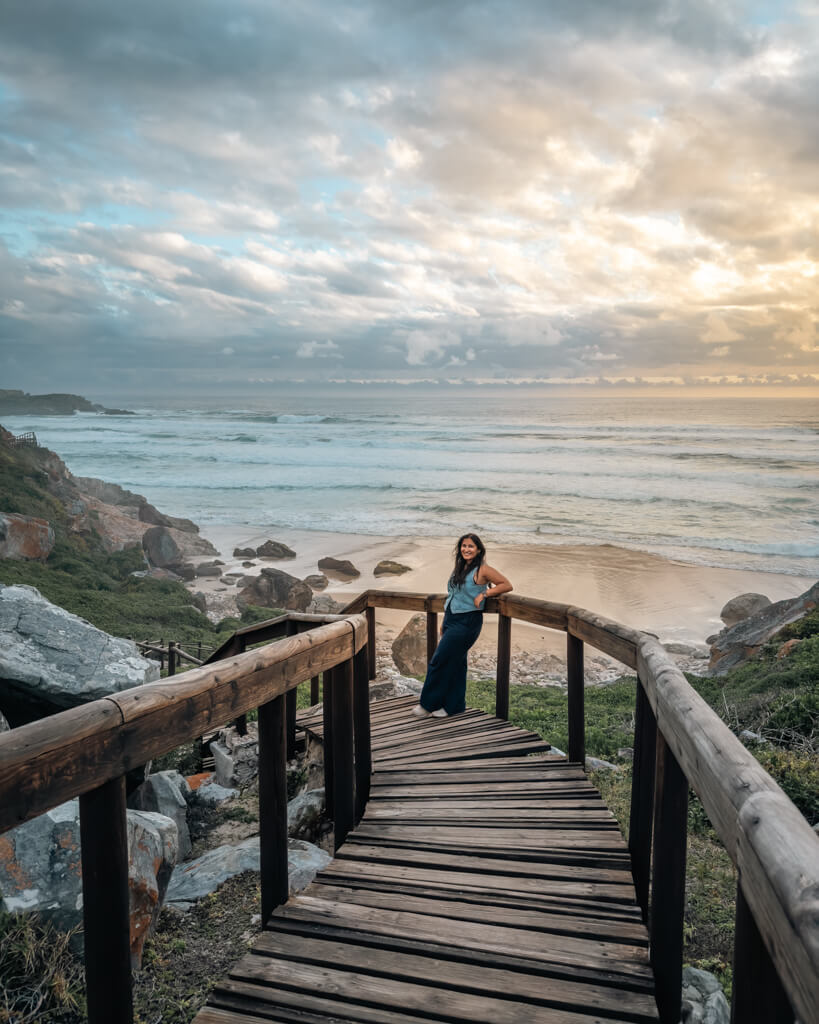
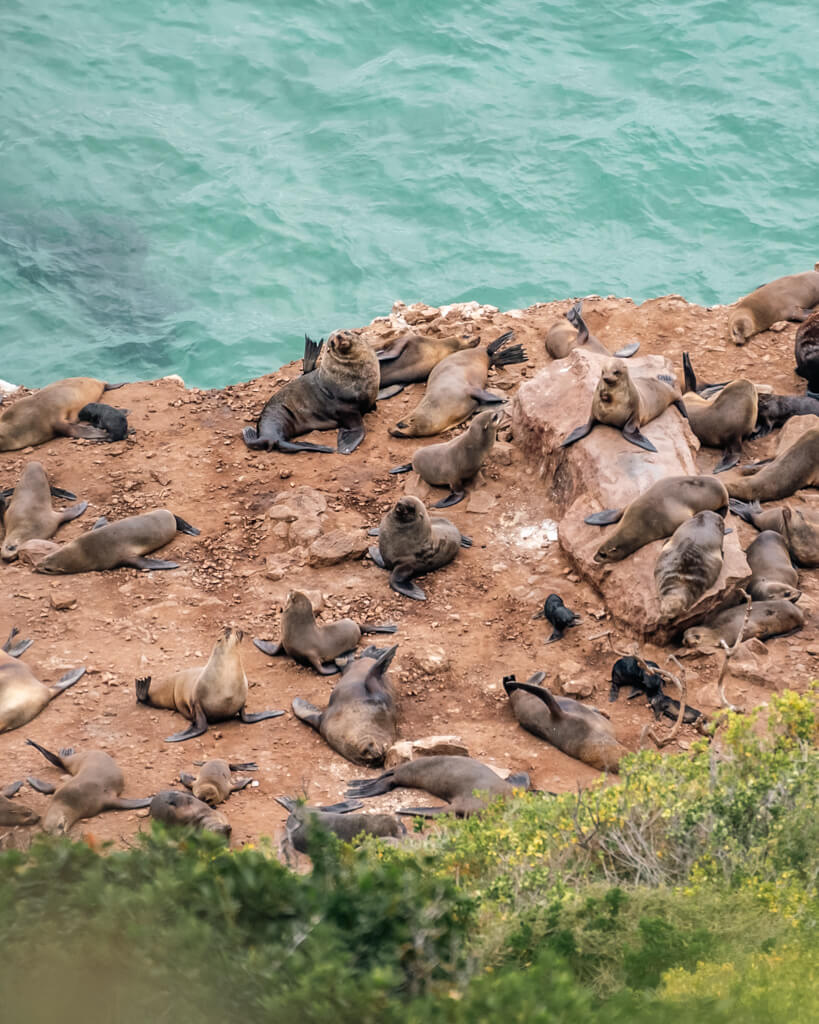
Where to stay: One thing we noticed while booking our stay in Plett is that most of them simply had a fan and no AC. Since we were visiting during peak summer, we were quite apprehensive about staying somewhere without an AC, but it worked out just fine, especially since we didn’t stay inside during the afternoon.
Premium and Luxury: The Plettenberg Hotel and Walker’s Beach
Mid-range: The Joneses or Ocean Watch Guest House (close to the beach)
Budget: Studio Bella Vista Plett (insane value for the price)
How to Spend Day 12 and 13 in Plett
Day 12:
Drive to Plett: After your morning meerkat tour, grab breakfast at your hotel and hit the road to Plettenberg Bay! The drive is a stunner—watch as the landscape shifts from arid desert to lush greenery before revealing the gorgeous coastline.
Now, don’t waste time this afternoon. Grab a bit at Ice Dream Land (famous Italian eatery), check in at the hotel, and head straight to your next stop—because you’ll need at least 4.5 hours for this one.
Robberg Nature Reserve: Time to lace up your shoes! Even if you’re not big on hiking, trust me, you need to do this one—the views are next level. All the photos you see above? They’re from here.
There are three circuit options, but since the park closes around 8 PM, you won’t have enough time for The Point (9.2 km)—unless you sprint (and yep, we actually saw people doing that).
The other two trails are totally doable this evening:
🥾 The Gap (2.1 km) – Perfect if you’re not into hiking or starting late (post 4:30 PM).
🥾 Witsand (5.5 km) – Highly recommend! This one gives you the best postcard views, lets you trek on sandy slopes, and even spot seals.
We did Witsand, and it was absolutely stunning. It took us about 4 hours with stops—because this isn’t a hike you just rush through. You’ll want to pause, soak in the views, and enjoy. So, set aside at least 4.5 hours, and trust me—you won’t regret it!
Dinner: For dinner head to Nguni (Modern African fine dining –reservations required), Surf cafe (for a local bar vibe) or Sol Kitchen (for great food)
Day 13:
Bloukrans Bridge Bungee: If you’re up for an adrenaline rush, the Bloukrans Bridge bungee is a must. It’s the world’s highest bridge bungee at 216 m. Even if you’re not jumping, you can do the skywalk or just stand on the bridge and watch others jump! We intended to do this but woke up so late that day that we couldn’t make it.
Mouth Trail in Tsitsikamma National Park: For something a little less terrifying but still super scenic, do this trail that leads you to the Storm’s River Suspension Bridge. This easy 2 km round trip short hike takes you through lush forests, over wooden boardwalks, and finally to the famous suspension bridge, which sways gently over the river with insane coastal views. We even saw a pod of dolphins while walking this trail!
Dinner: Emily Moon for sunset and dinner
Day 14: Knysna (Garden Route)
Drive Distance: 34 km
Drive Time: 40 minutes
Knysna is one of the prettiest stops on the Garden Route, with its massive lagoon and lush forests – a laid-back, scenic spot that’s hard not to love.
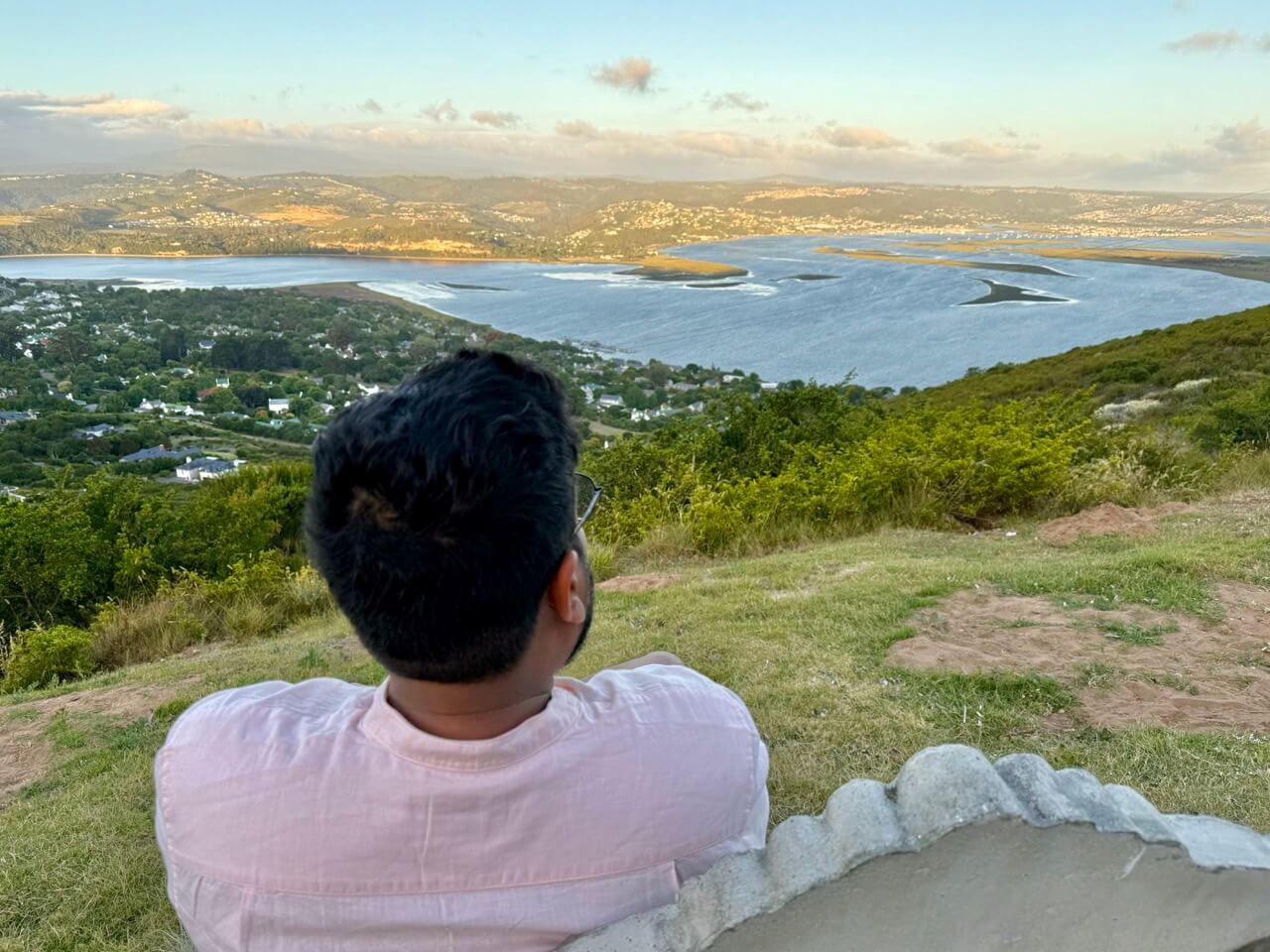
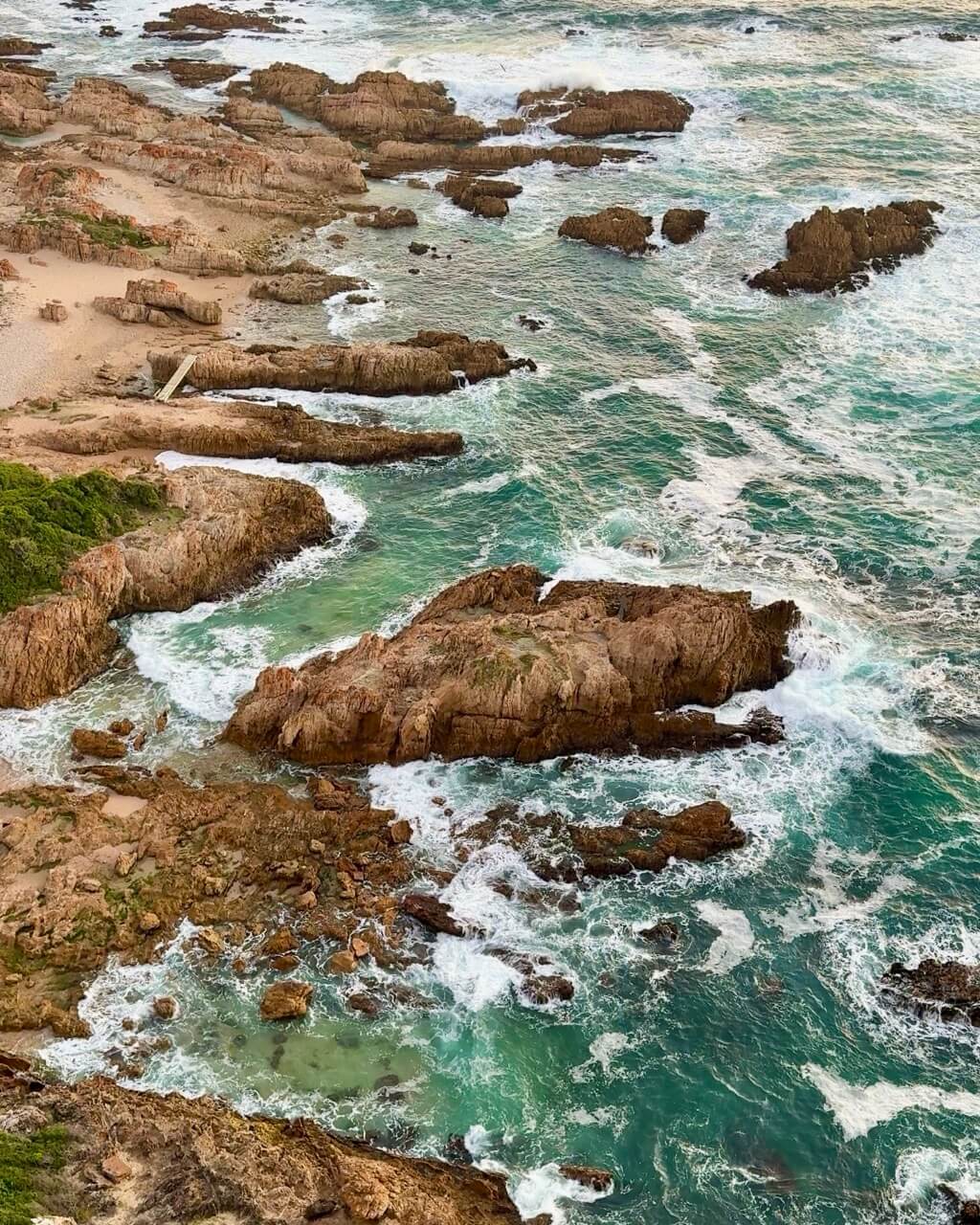
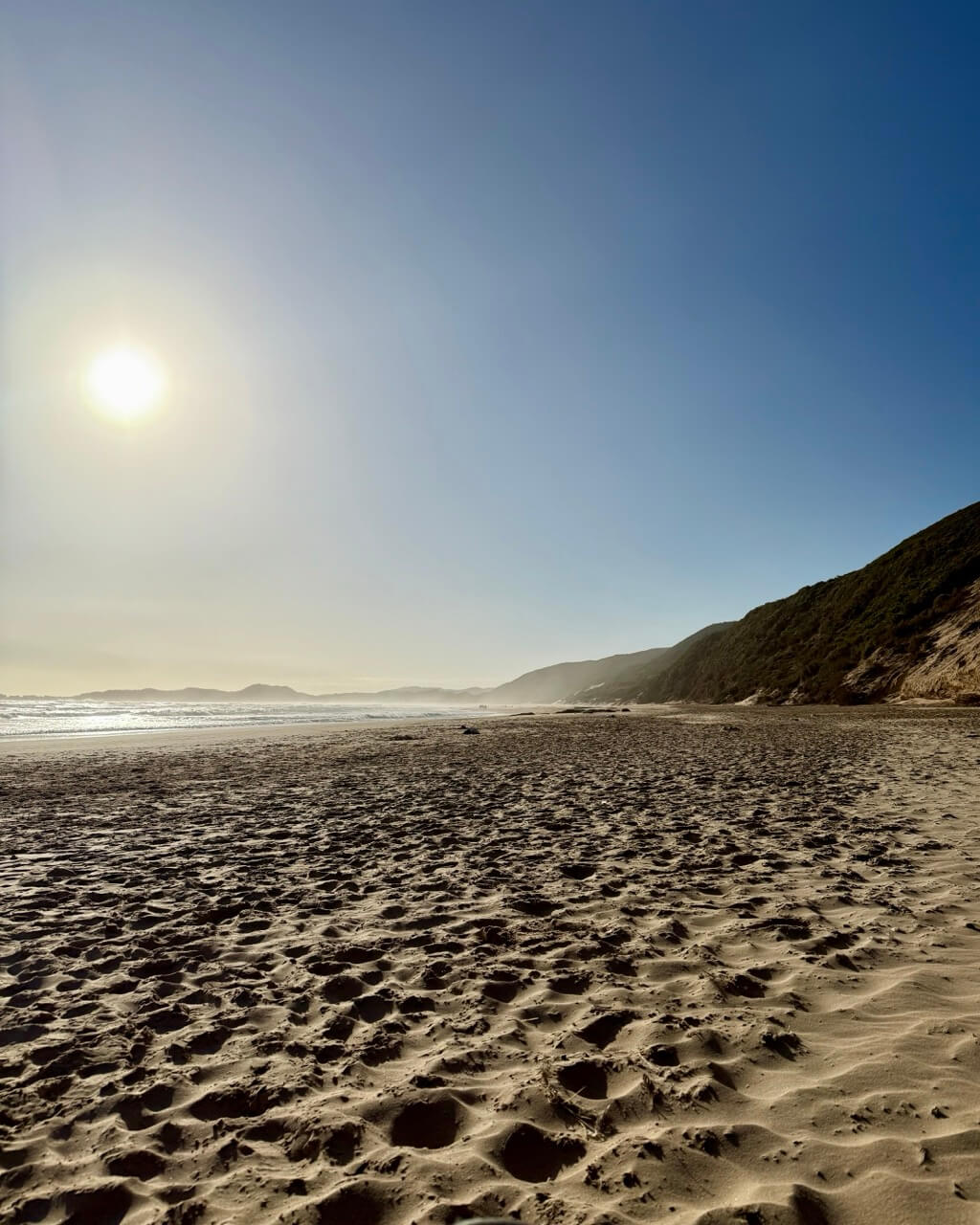
Where to stay: In Knysna, the main thing is to decide whether you want to stay somewhere with a view of the water or if that’s not the most important factor. We really wanted to stay somewhere with a view of the lagoon and yes, the view from Overmeer Guesthouse was stunning but in hindsight, I wouldn’t have stayed here because the breakfast was quite bad!
Luxury & Premium: Villa Afrikana Guest Suites by Knysna Paradise Collection
Mid-Range: One on Bollard (rave reviews) or Guest House The Lazy Lion (view)
Budget: Friendz Guesthouse
How to spend your day in Knysna
Knysna Heads: After checking out, head straight to the Knysna Heads – two towering cliffs where the calm lagoon meets the wild Indian Ocean, creating a dramatic clash of still waters and crashing waves. There are two viewpoints, both completely free! Before or after exploring, grab lunch at East Head Café—great food with even better views
Pro tip: Do NOT go here at sunset. We did, and it was way too quiet and super eerie.
Margaret’s Viewpoint: The view of the Knysna Lagoon from here is just marvellous.
Brenton-on-Sea Beach: For sunset, head to Brenton-on-Sea Beach instead. It’s a gorgeous, wide stretch of sand with dramatic cliffs and barely any crowds. We spent hours here doing absolutely nothing—and loved every second of it.
Dinner: Head to the Butterfly Blu Restaurant nearby for dinner. If you want to head into town, then 34 Degrees South on the waterfront for amazing seafood. Since my husband is vegetarian, we ate at Knysna Social Eatery, which had fab options.
Tip: If Knysna doesn’t quite appeal to you or you’d rather cut down on the drive time for the next day, just check out the Knysna Heads, grab a bite, and head straight to Mossel Bay instead, which is 146 km away. While Mossel Bay would’ve made for a more logical place to spend the night this day, we couldn’t skip Knysna. So the choice is yours!
Day 15-16: Hermanus
Drive Distance: 450 km
Drive Time: 5 hours
Hermanus is hands down one of the best places in the world for land-based whale watching. From June to November, southern right whales come super close to shore, and you can literally spot them from the cliffs—no boat needed!
But even outside whale season, Hermanus is a gem with beautiful coastal walks, stunning beaches, cute cafes and epic seafood. And if you’re feeling adventurous, you can go shark cage diving nearby!

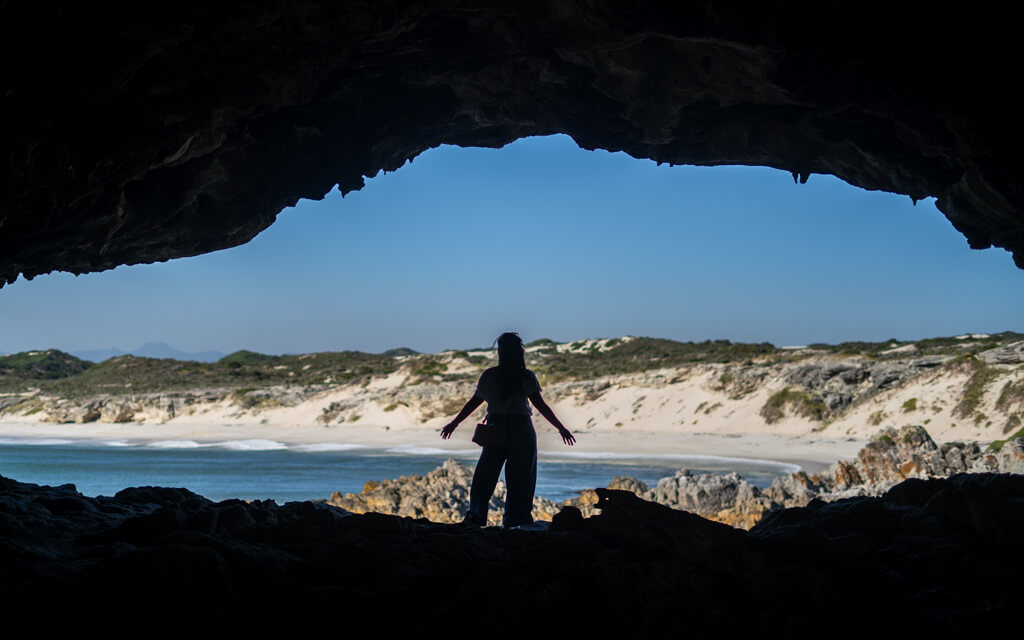
Where to stay in Hermanus:
Luxury: Birkenhead House
Premium: Boutique Ocean Views
Mid-range: Selkirk House
Budget: Coral Tree
How to Spend Days 15 and 16 in Hermanus:
Day 15
Drive from Knysna to Hermanus: You’ll want to start as early as possible—it’s a long 5-hour drive and not the most exciting one either.
There are quite a few stops along the way. We really wanted to visit the Southern Tip of Africa and check out some shipwrecks, but that would have been an 80 km detour, so we skipped it. If you leave early enough, though, it’s definitely worth considering!
Klipgat Cave: We stopped at this prehistoric coastal cave with insane ocean views that was once home to early humans over 70,000 years ago! The walk there is a bit uneven (so wear sturdy shoes), but it’s so worth it.
Cliff Path: Once you reach Hermanus, check in and head straight to the cliff path to take in the gorgeous sunset views over the ocean. If you’re lucky and go in the right season, you might even spot some whales!
Day 16
Shark Cage Diving: This morning, you can kick off the day with a shark cage diving experience on the first boat out. If you do, pick a company that focuses on shark research and conservation, so you actually learn something about these incredible creatures. That said, consider the ethics—there are mixed opinions about the impact of cage diving, so it’s worth doing your own research.
OR
Whale Watch: If you’re visiting during whale season (June–November), another amazing option is a whale-watching tour, where you can see these gentle giants up close or even a Big 5 Boat tour where you can see whales as well as sharks
De Hoop Nature Reserve: With the rest of the day, you can visit De Hoop Nature Reserve, a spot we really wish we had time for! It’s got endless white sand dunes, rugged cliffs, and turquoise waters, plus tonnes of wildlife. It’s also one of the best places for land-based whale watching, especially when southern right whales come super close to shore.
Beyond whales, you can go hiking, spot zebras and bonteboks, or just chill on the untouched beaches. The last stretch of road is best suited for 4WDs, but small cars can manage too (just be prepared for a possible tyre change!) but it’ll be worth it.
OR
Cape Agulhas: If De Hoop feels like too much of a detour, then today’s your chance to visit the southernmost point of Africa at Cape Agulhas. While here, check out the Meisho Maru Shipwreck, a rusted relic along the coast, and if you’re into maritime history, swing by the Shipwreck Museum in Bredasdorp.
Day 17-21: Cape Town
Drive Distance: 144 km
Drive Time: 2 hours 20 minutes
Cape Town is the kind of place that steals your heart. With Table Mountain and Lion’s Head towering over the city, golden beaches on one side, and vineyards on the other, it’s got that perfect mix of nature and urban energy. No wonder it’s been voted the world’s best city multiple times!
The vibe is laid-back but buzzing—trendy cafés, lively markets, and a creative scene that keeps things fresh. Whether you’re hiking up Lion’s Head, exploring its many sights, or just soaking in a sunset at Camps Bay, Cape Town just hits different.
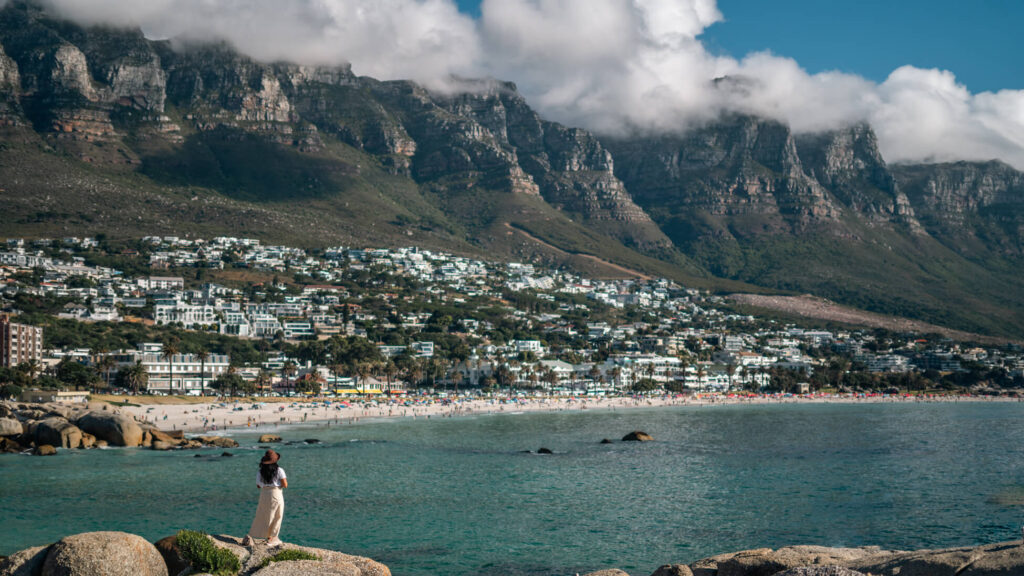
Where to stay in Cape Town: The best areas to stay in Cape Town are anywhere between Camp’s Bay and Green Point. Camp’s Bay because you’ll want to go here again and again and Green Point because it’s located so well with lots of restaurants and attractions close by. We stayed in Green Point and found it to be quite convenient. Avoid the city centre (Central Business District/CBD) even if you find cheaper stays, as it is not known to be safe.
Luxury: Ellerman House
Premium: Sea Star Rocks Boutique Hotel (epic views)
Mid-range: Villa Costa Rose
Budget: Designer Studio Camps Bay or Casa 1
How to Spend Days 17-21 in Cape Town:
Day 17
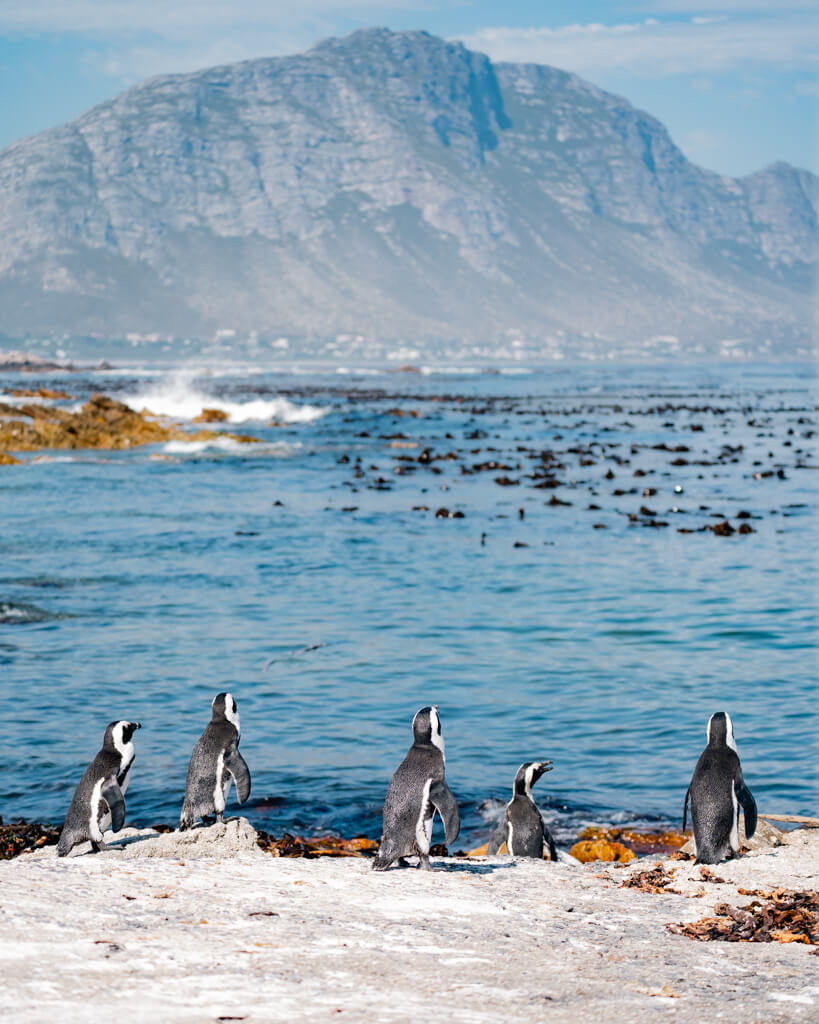
Leave Hermanus early and start making your way to Cape Town, but don’t rush—there are some great stops along the way.
Stony Point Penguin Colony: This is a free and quieter alternative to Boulders Beach, where penguins waddle right up to you. A far better experience than Boulder’s Beach.
Dappat se Gat: It’s a hidden beach with caves, cliffs, and a wild, untouched vibe. If you’re into photography, you won’t want to miss it.
Then head to Cape Town. The coastal drive to Cape Town is absolutely stunning, with winding roads and epic ocean views.
Timeout Market at the V&A Waterfront: Once you arrive, settle in and head for great food, great vibes, and the perfect way to wrap up the day!
Day 18
Drive Distance: 160 km
Drive Time: 4 hours

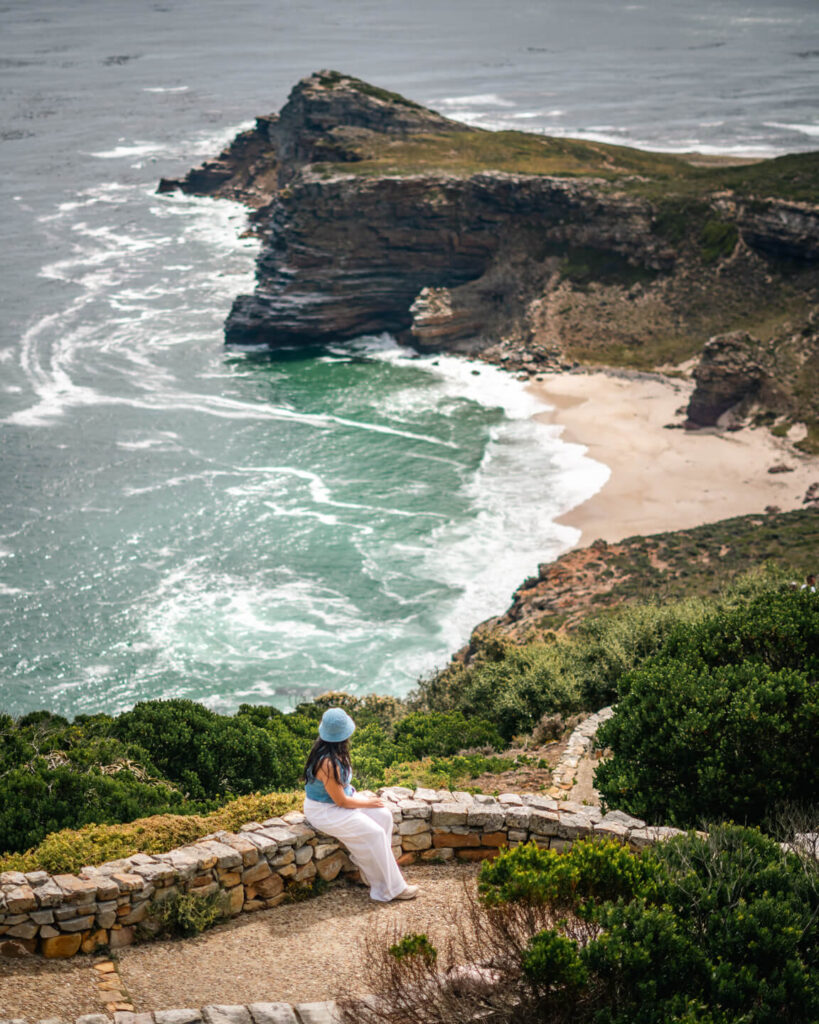
Spend the day exploring some of Cape Town’s most iconic coastal spots.
Muizenberg Beach: Start at this beach that is famous for its colourful beach huts and great surf. It’s perfect for some photos and you can even grab breakfast here.
Boulders Beach: This is where you can see African penguins from a walkway (it gets super crowded) and even head down the beach to walk super close to them. However, ensure you go here during low tide and wear your swimsuit, as you may have to swim up to the beach with the penguins. Plan your day according to low tide timings. If you’re on a budget and went to the Stony Point penguin colony, you can skip this because it is paid.
Cape Point: Before I went, I never understood the purpose of going here. But then the view from the top of the lighthouse, the other viewpoints, and the hike back down are splendid.
Cape of Good Hope: This is the southwesternmost tip of Africa, with rugged cliffs and crashing waves! While the views aren’t epic or anything, it’s still a great place to tick off.
You can either drive from Cape Point to the Cape of Good Hope or even hike it and back, which is a 1.5-hour return walk.
Chapman’s Peak Drive: This is hands down one of the most scenic coastal drives in the world. This 9 km route with 114 curves goes along a cliff and has insane ocean views and dramatic rock formations. Ensure you stop at the viewpoints for photos.
Maiden’s Cove: On your way back, make a stop at this stunning place—perfect for a refreshing dip in the tidal pool or just sitting on a rock and watching the sun dip behind the ocean. The views of Camps Bay, the Twelve Apostles, and the Atlantic make it an unforgettable sunset spot!
Day 19
Drive Distance: 25 km
Drive Time: 1 hour
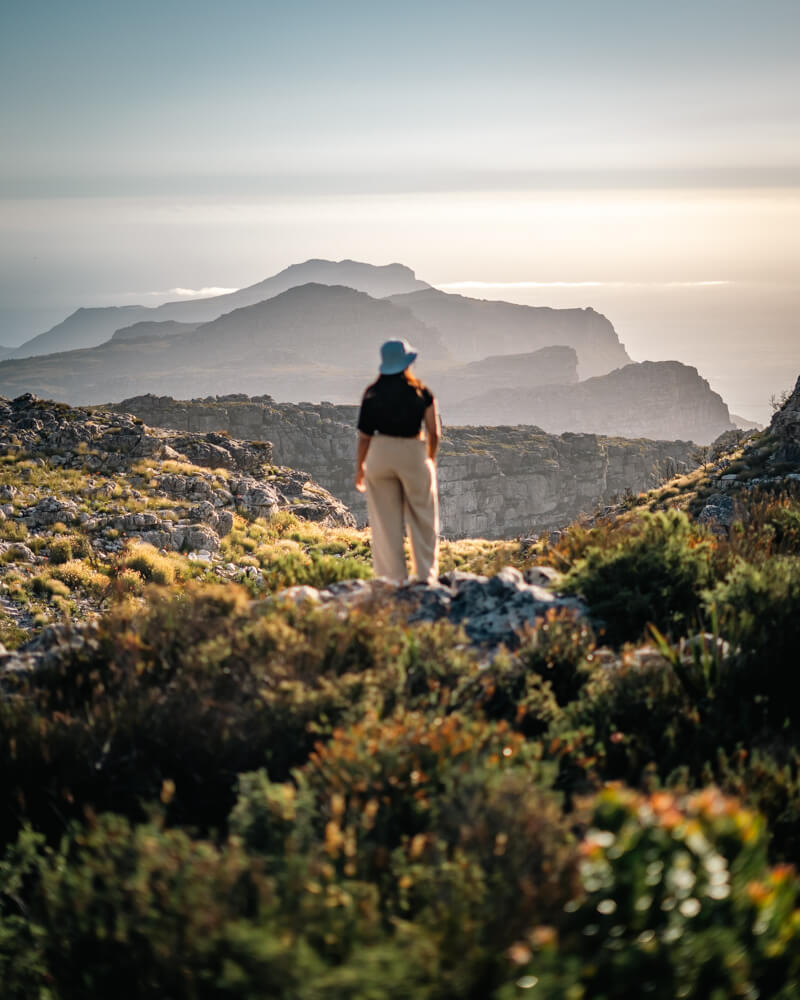
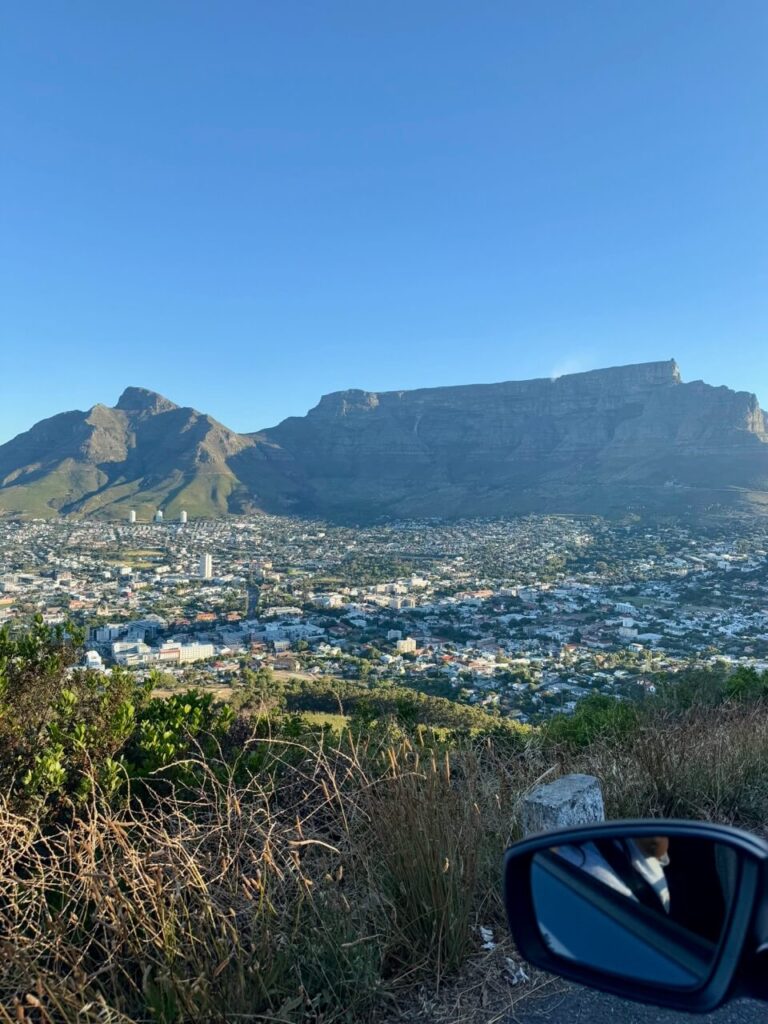
Robben Island: Start with the former prison where Nelson Mandela was held for 18 years. A guided tour takes you through the island’s history, including a visit to Mandela’s actual cell, making it a powerful and emotional experience. Tickets sell out in advance so do pre-book.
If Robben Island doesn’t interest you, you can head to Clifton 1st or Camps Bay to enjoy the beach or go paragliding because the views over Cape Town will be epic!
Old Biscuit Mill Market in Woodstock: This trendy spot is packed with local food stalls, artisan shops, and live music, making it the perfect place to grab lunch and soak in Cape Town’s creative energy.
Table Mountain: End the rest of the at Table Mountain – one of the new seven wonders of nature! Take a cable car up (buy tickets online before you go) and hike to Maclears Beacon, which marks the highest point on Table Mountain. It’s an easy 1-hour, 5 km round trip hike but you can turn back at any time you like. Else, just take a loop around the top so you can appreciate the 360° views of the city, ocean, and beyond! Visiting Table Mountain can be time intensive so expect to spend half a day here. We parked our car at the bottom at 4:30 PM and were back at our car at 9:30 PM.
Day 20
Drive Distance: 53 km
Drive Time: 1 hour 30 minutes
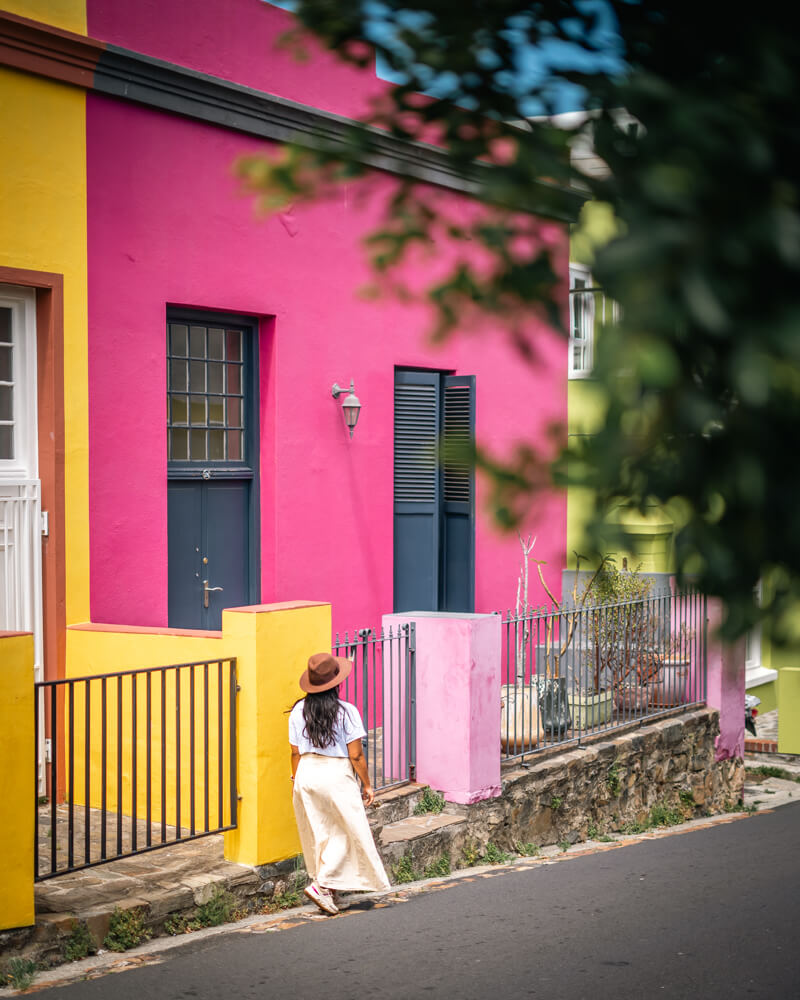
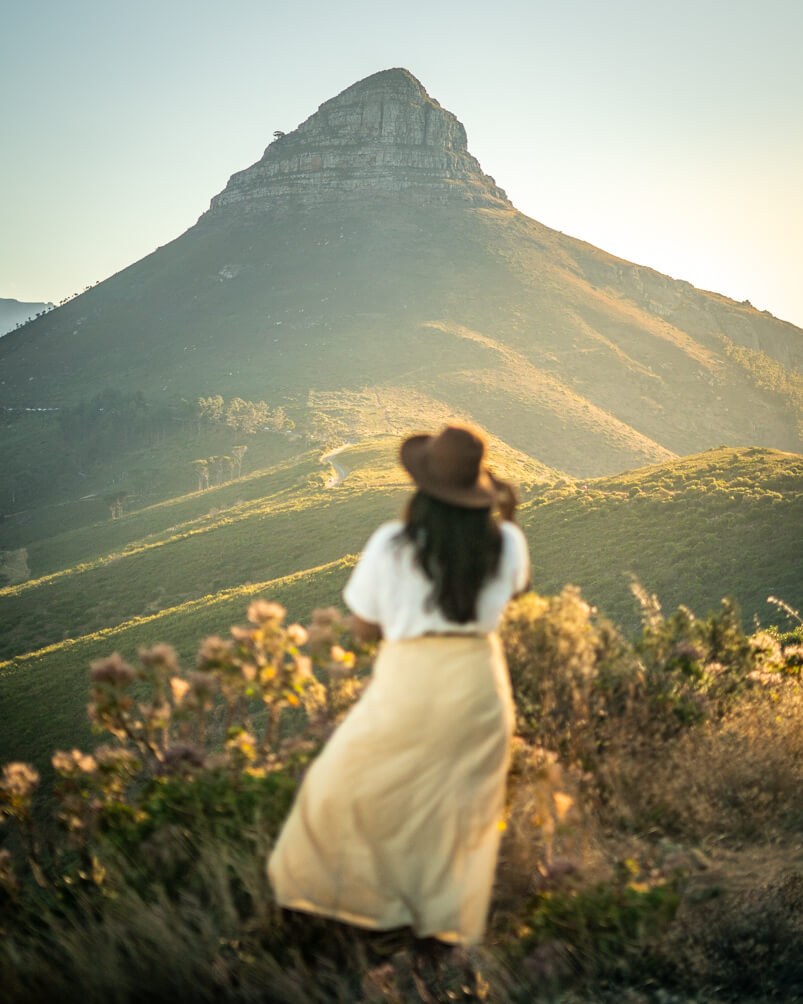
Sunrise hike up Lion’s Head—It’s a short but steep hike that most tourists end up doing because you not only get 360° views over Cape Town but the sunrise over the city is gorgeous. But you’ll have to start at 4 in the morning if you’re to get there on time. If hiking isn’t your thing, you can skip it and wake up a bit late to head to your next spot. We got lazy 20 days into our trip and didn’t end up doing the hike!
Oranjezicht City Farm Market: Head straight for breakfast at this lively spot with fresh local produce, artisanal food, handicrafts and amazing coffee. It’s open only on the weekends from around 9 AM to 2 PM. So plan accordingly. We went two days consecutively because we enjoyed it too much.
Bo-Kaap: This is Cape Town’s most colourful neighbourhood, known for its bright houses and rich Cape Malay heritage—perfect for photos! We went here by ourselves and didn’t enjoy it much because we didn’t know what to do here, so I highly recommend joining a guided tour like this one to learn about the area and get more context. The tour shows you not only Bo-Kaap but also the famous District Six Museum. The 12-2 PM slot fits perfectly with this itinerary.
Kirstenbosch Botanical Gardens: Grab lunch nearby and head to one of the most beautiful gardens in the world, where you can walk among lush greenery with Table Mountain as your backdrop as well as over the canopy on the Boomslang aerial boardwalk. You can easily spend 2-3 hours here!
Sunset at Signal Hill— End the day with a sunset at Signal Hill. It is a chilled-out spot where you can just relax, take in the views, and watch Cape Town light up below.
Day 21
And just like that, it’s time to say goodbye to stunning South Africa. After days of epic landscapes, incredible wildlife, world wonders, and unforgettable adventures on this South Africa and Victoria Falls itinerary, this trip is coming to an end! Whether it was the warmth of the people, the jaw-dropping scenery, or the insane wildlife, there’s no doubt these two countries are one for the books.
As you head home, one thing’s for sure—you’ll already be dreaming of coming back!
Visas
For these 3 weeks in South Africa and Victoria Falls, you’ll need 3 visas. I know it’s quite annoying to submit documentation for these but thankfully, not all require sticker visas and passport submissions because that would be crazy.
For us, as Indians, this is what we did. We’ll elaborate on visa requirements in the sections below.
South Africa: We needed to apply for a sticker visa through VFS
Zimbabwe: Visa on arrival
Zambia: Transit e-visa
South Africa
There are a large number of countries that are exempt from applying for a visa for South Africa. You can go through the list here. If your country is not exempt, you will have to apply for a sticker visa at the embassy or consulate near you depending on your country. You can go through the requirements here.
In addition, remember that a yellow fever certificate may be needed if your journey starts in or you’ll be passing through the yellow fever belt of Africa or South America. We were not asked for it in either of the three countries.
South Africa Visa Process for Indians
If you’re an Indian passport holder residing in India, you’ll have to apply through VFS. You have to go to the VFS office in any of these cities and submit a list of documents and your passports and pay the VFS fees of around INR 2301, depending on your centre. No appointments are needed. You can find all the details of documents needed here.
I’ll just give a few tips because the VFS folks can be quite rigid while checking your documents for South Africa :
- The South African visa can sometimes take a while to process, so it’s best to apply at least one to two months in advance to be safe. In our case, it arrived promptly in 14 days.
- If your passport is issued from a different city than where you’re submitting your application, you’ll need to provide address proof in the form of an ID. If you don’t have an ID with your current address, don’t worry—it’s quite easy and quick to update your Aadhaar address if needed. The Aadhaar copy you submit (along with any other required government ID) must be notarised.
- You’ll also need to submit a company leave letter printed on official company letterhead with a manually signed signature. VFS does not accept digital signatures or printed copies of e-signed letters. If your company refuses to provide a manually signed letter, make sure to explain this clearly to VFS. We faced the same issue, so we added an explanation in our cover letter and submitted it anyway—it worked!
Victoria Falls
If you’re from a country that needs a visa to get into Zambia, Zimbabwe, and Botswana and are eligible for a KAZA UNIVISA, then you should get one. Check the eligible countries here. The visa costs USD 50 and allows you to visit these countries multiple times. The visa is valid for up to 30 days, as long as you stay within Zambia and Zimbabwe. But it also covers those who visit Botswana for day trips through Kazungula Borders.
You can get this visa on arrival or even get it online. Please read the details here.
If you’re not eligible for a KAZA univisa, then read on.
Zimbabwe: Countries are divided into three categories; depending on which category your country falls in, you either do not need a visa, can get a paid visa on arrival or need to apply for an e-visa. You can check the country category and requirements here. You can opt to get a single-entry visa for $30, a double-entry visa for $45, or a multiple-entry visa for $55. These can differ by country so it’s best to do your own research before you go.
Since we’re from India, we opted to get a double-entry visa on arrival, which cost us $45 per person. The process was smooth and quick. The immigration officers don’t provide change and often don’t accept cards, so please carry the exact change in dollars.
Zambia: For Zambia, you can apply for an e-visa on this website. You’ll need the following documents: a scanned passport photo, a notarised copy of the passport, a cover letter, a return flight, and a hotel booking.
If you’re travelling only for a few hours from Zimbabwe to visit the Zambia side of Victoria Falls or take a dip in the Devil’s Pool, you can simply apply for a transit visa. This is what we did and all worked out just fine. For the return flight and hotel booking, add your Zimbabwe ones since you won’t be staying in Zambia or taking flights there.
This blog post, ‘3 Weeks South Africa and Victoria Falls Itinerary’, has affiliate links that enable us to earn a small commission when you make a purchase, with no extra cost to you. We only recommend products that we like and those that might interest you. If you like any suggested product, do buy from the given links.

